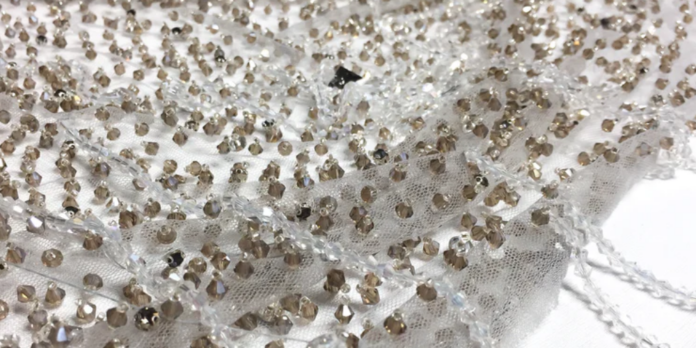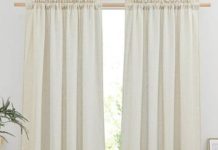Tulle, lace, and organza are the kinds of transparent textiles that are most frequently used for beading. Jacquard, tweed, and boucle are examples of opaque beaded fabric. This luxurious fabric can flaunt a variety of styles, from delicate floral patterns to intricate beadwork, depending on the particular pattern chosen.
The technique of stitching beads onto cloth, leather, or any other foundation material in order to beautify the surface is referred to as bead embroidery. Bead embroidery doesn’t require a significant amount of specialized equipment or resources beyond those needed for basic bead weaving.
Bead Embroidery Some Historical Context
Bead embroidery is a style of beading that involves stitching beads onto a surface made of fabric, leather, or suede. This type of beadwork is done with a needle and thread.
The embroidery of beads is a sort of ornamentation rather than a component that is necessary to the construction of a textile. Bead embroidery is distinct from other beadwork techniques such as bead weave, bead crochet, & bead knitting in this regard.
Beads woven, knitted, or crocheted can be connected to the fabric during manufacturing but must always add embroidered beads to the finished product.
Bead embroidery has historically been employed in the production of fabrics for use in garments and home design. It is possible to utilize it to make jewelry by attaching structural supports, such as bracelet rings, to the finished piece.
Bead embroidery is a technique that may be used to beautify a variety of products, including those used in the home (pillows, boxes, belt buckles, etc.) and apparel accessories (such as handbags and belt buckles, for example). Bead designs are measured and designed with seam allowances when they are going to be utilized with hard surfaces. Following embroidery, the bead patterns are affixed using glue or epoxy.
Bead Embroidery as A Crafting Method
Beads can be embroidered using one of these three fundamental techniques: individual beads can be sewed directly onto fabric; can run many beads through such a needle before going through the backing, or a line of thread beads can be laid upon a cloth and secured using couching stitches.
When stitching beads onto fabric, most individuals use a needle and thread. They typically use a small needle with such a small eye to make it easier to pass the needle through the tiny holes in so many seed beads.
Another technique uses a good hook to link stitch thread onto the fabric; this method is known as Tambour or Luneville embroidery in Europe and is frequently used for beading high fashion garments. The technique is Zari or Moochi Aari or Aari in India. It is employed in the production of clothes and furniture. One of the distinguishing features of Tambour and Luneville embroidery is the chain is made on the top side of the cloth, while the beads are linked to the back of the fabric in both types of needlework.
In contrast, the beads used for Zari & Aari work are fastened to the upper side of the fabric, which is where the chained stitch is created. When doing Zari or Aari work, the thread is looped through each bead as the threads are being made.










